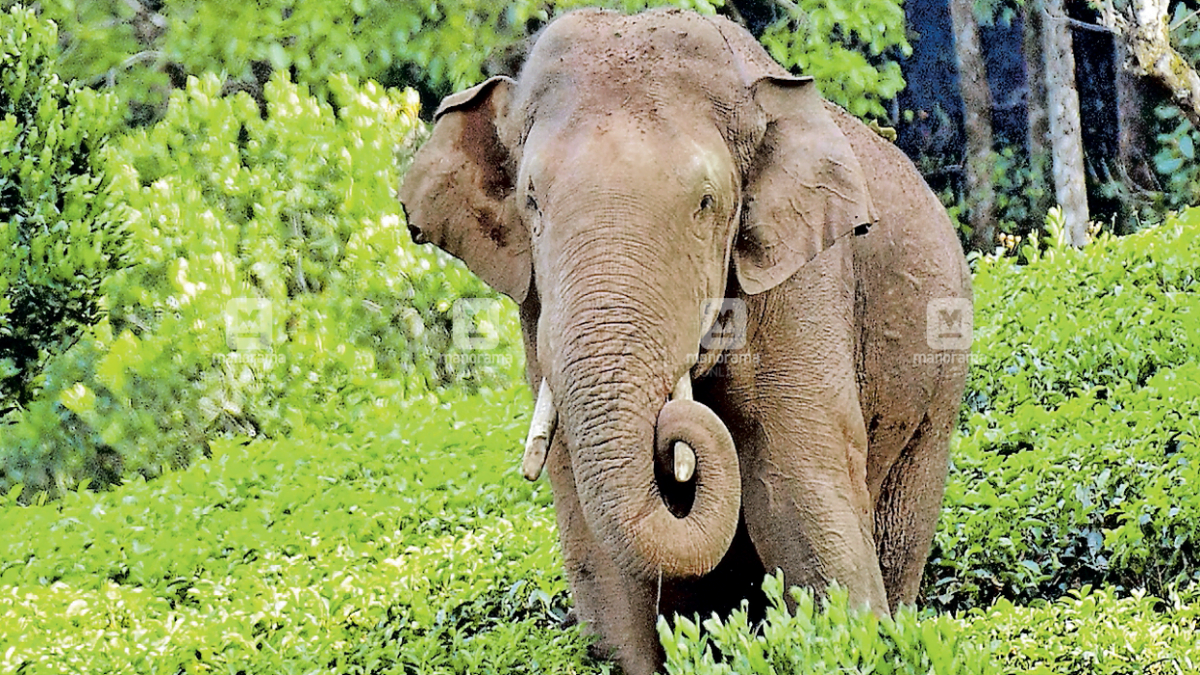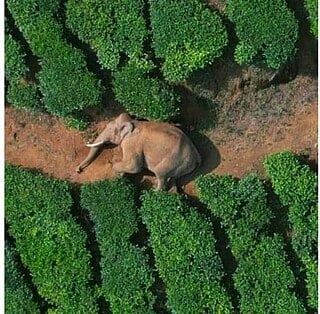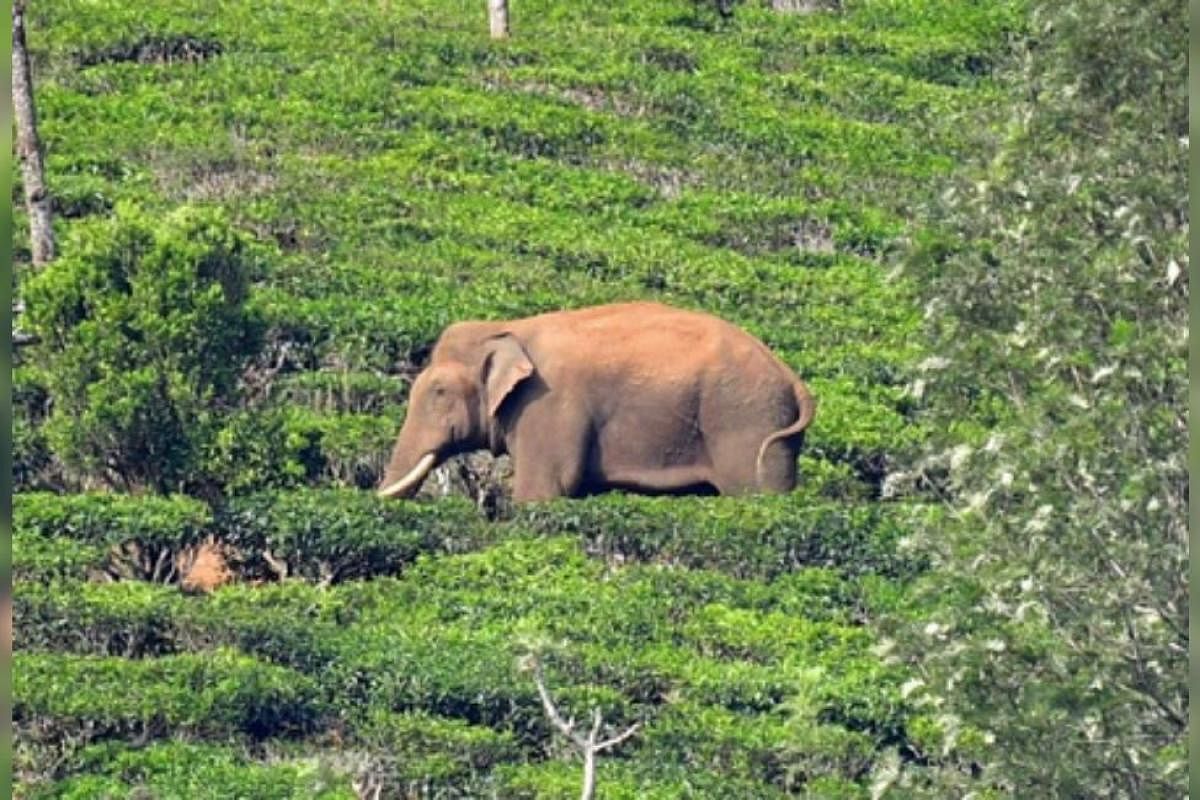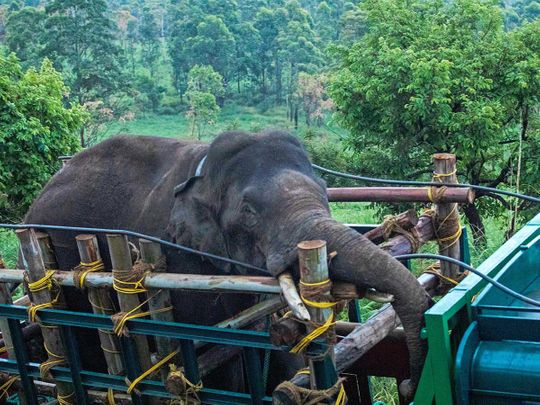The story of Kerala’s beloved and celebrated Rice Tusker a.k.a. Arikomban haunted the news for many weeks during the final half of last year. It remains a huge concern for animal and nature lovers all over the country. Astonishingly, Arikomban has been fought for by the conservationists and the public in Kerala and Tamil Nadu with much enthusiasm
Who is Arikomban?
The Rice Tusker, Arikomban (in Malayalam) or Arisi Komban (in Tamil) are the names given to the thirty year old gentle giant, native of the Chinnakanal region of Idukki district in Kerala. Arikomban who got this title owing to his love for rice is a native of this place. This region is an elephant corridor, a geographical area inhabited by elephants since ages thus, they always return to this place no matter what. Technically, it is said that this ‘home coming’ instinct is ingrained in their genes and passed on from ancestors. Chinnakanal was a reserved forest area which had no human inhabitation except for the Muthuvan tribal community co-existing with the elephants and the environment over there. There is also the Anayirangal dam nearby in the region where these gentle giants would descend to drink water and return.
In the year 2002 through a special legislation, 301 Colony was installed in this locality, empowering the numerous landless people and tribal communities to build their habitations.
In the year 2002 through a special legislation, 301 Colony was installed in this locality, empowering the numerous landless people and tribal communities to build their habitations. The rise of these concrete buildings obstructed the pathways of the elephants leading to the destruction of human properties and frequent animal-man conflicts. Thereby, the involvement of the Government authorities and judiciary culminated in the translocation of Arikomban, the famous trouble maker from the Chinnakanal region to the Periyar Tiger Reserve vicinity in the Kerala-Tamil Nadu border.
Though the news sparked anxiety among the people in the Periyar area who even filed cases against this move, the tribal people in the region received the news with so much enthusiasm that they organised a welcoming pooja for Arikomban. He continued with his rice raids in the region before returning to his native location of Chinnakanal in Idukki, passing over eighty miles in the movement. His return created havoc for the people and properties without doubt, but the media coverage had always shed a negative light on the story, often seeking to mould an aggressive take on Arikomban.
301 colony and Arikomban
According to the sources, the Chinnakanal region in Idukki was a reserved forest area which later turned to a human habitation with special legislation to settle the landless tribals. Thus, the 301 Colony came to be which also resulted in the encroachment of the land by resort lobbies. With the years, people have understood that living in this region is risky with endless trouble from nature. The colony is situated in the exact region where elephants used to frequent. Thus troubled by the constant disturbances by elephants the people moved to the court.
Most of the settled people joined, leaving out only a few. They received the compensation and resettled to another secure locations. As to the people left in the region, it is unclear as to what they want or why they still continue to be there. The resort lobbies can convert this reserve forest region to a revenue land as well as get rid of the elephants by translocation.
It is this political agenda that could build news and currency to the idea that elephants or animals are dangerous and they must be relocated. Arikomban was also thus identified by them as a killer of seven people according to the Government, yet no records are stated in this regard. Man as a social animal has always conquered and controlled nature but encroaching and taking away the only solace of animals for monetary benefits is deplorable. Arikomban is leading a lone fight for his native home that he treasures. No matter how long he is translocated or radio collared he will come back to his home. Therefore, it is man with his remaining sense of awareness who should clear the way for the well being of nature.
Destruction to environment and properties
In saying the gentle giants are causing trouble, it also directly points to the amount of deterioration of nature in the region. People living in the region say that before thirty years, there was none of these conflicts in the rate as they appear before us. The doubtlessly translocated site and the changed geography of the region are the main reasons for animal attacks.
With the installation of the 301 Colony, the terrain started showing signs of continuous human activity resulting in increased cultivation, waste accumulation and developmental functioning. Farmers widely use electric fencing to ward their crops from animal attacks which forces several animals including these gentle giants to take new routes sometimes in the vicinity of human habitants. Animals coming here are attracted to waste. They consume it together with plastics, leading to their death.
Waste disposal in these regions, always has been a mess with a heavier negligence from the authorities. With the human settlements in the region, human activities have also increased; tenting, camping and touring are rampant backed by the involvement of resort lobbies without permits. Widening of roads is an unavoidable consequence seen in relation to the increased influx of tourists to these spots. Animals find it difficult to cross wider roads. Thus, they deviate to new pathways to seek food and water, increasing the incidents of conflicts.
Here, the amount of deterioration done to plant life should also be noted down with respect to the clearing of the native Shola grasslands.
Here, the amount of deterioration done to plant life should also be noted down with respect to the clearing of the native Shola grasslands. In the name of aforestation, they have planted the area with a destructive foreign variety of Eucalyptus with high commercial value, and high levels of ground water exhaustion.
Unlike, the popular opinion as given out by the media, the people in the area empathise with the gentle giants. The Muthuvan tribal community in the Chinnakanal region started a sit-down protest to cancel the translocation of Arikomban.
‘How is it fair to insist that the elephants be moved out when it is actually us who have taken over their lands?’ saya Karnan M, a 28 year old auto driver in Munnar town.
When one follows the news reports as they are presented, viewers are misled into believing that Arikomban is a blood thirsty elephant that cannot be tamed. But this news becomes meaningful only when it is read in context of birthplace. Arikomban was left an orphan beside his dead mother in Chinnakanal when he was just a one year old calf. His memories of the sight where his mother died and also the reason behind this death might be haunting him to come back to Chinnakanal.
‘How is it fair to insist that the elephants be moved out when it is actually us who have taken over their lands?’ saya Karnan M, a 28 year old auto driver in Munnar town.
It is something that is ingrained in his organic memory that cannot be undone. Therefore, it is up to the reasonable humans to mend the situation with empathy. Keeping this moving story of Arikomban in mind, director Sajid Yahiya has announced a film on the life of Arikomban, much awaited by the Arikomban-lovers and conservationists.
About the author(s)
Vidhu (she/her) is an emerging writer with Masters in English language and literature, keen on learning the politics of the world around her. She has dreams to create a career in journalism and writing, where she unburdens her self. She has a great taste for movies from varies geographical spans and pens down poetry in magical charms. She is open to projects or research centring on humanities.









